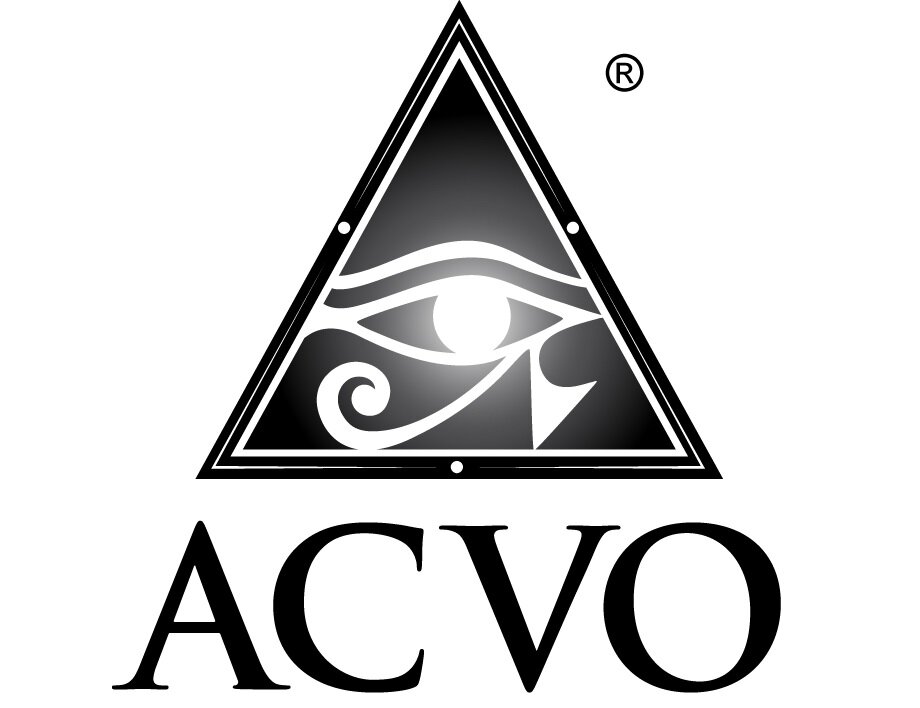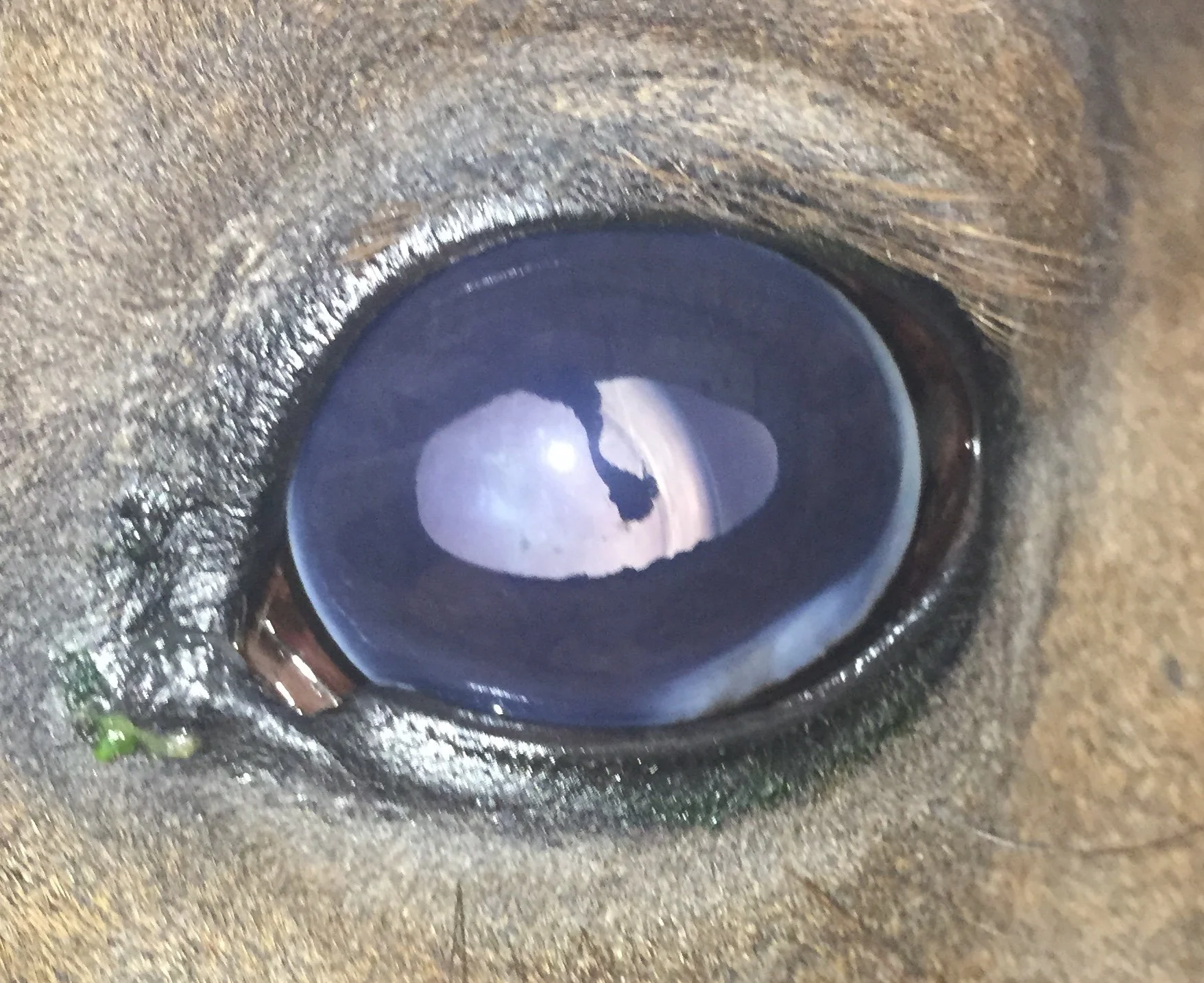“Cherry eye” is another way of saying that there is a prolapsed (stuck out) gland of the third eyelid. This prolapsed gland is the main tear producing gland for the eye, and produces between 40—60% of the tear film.
Read MoreBlunt ocular trauma occurs when the eye or globe is impacted by a blunt object. Blunt ocular trauma in animals usually results in severe intraocular damage, and the prognosis in most of these cases is guarded to grave for vision.
Read MoreThere are many reasons why an eye may look red, but one important cause is hyphema (bleeding into the anterior chamber of the eye). The anterior chamber of the eye is the space between the cornea (clear layer at the front of the eye) and the iris (the colored part of the eye). The anterior chamber is normally filled with aqueous humor, which is clear and devoid of cells.
Read MoreThe clear surface of the eye is called the cornea and the clarity of this structure is important to maintain vision. Corneal surgery is performed to treat any disease processes which can decrease clarity or threaten the stability of the eye. In horses an inflammatory process called immune mediated keratitis (IMK) can occur which causes cloudiness of the cornea.
Read MoreCloudy eyes can be a major concern for pet owners, especially since cataracts are an important cause of vision impairment in pets. Cataracts and Nuclear sclerosis are the most common causes of clouding of the lens that may be noted by pet owners, but there is sometimes confusion over which condition a pet is affected by.
Read MoreCancerous masses that occur on or within the eye are known as ocular tumors. These tumors can occur on the surface of the eye (corneal tumors) or within the eye (intraocular tumors). Corneal tumors are commonly associated with UV light exposure and occur in lightly pigmented tissue…
Read More“How many eyelids does my pet have?” quite often. You may have never really stopped to think about it, but dogs and cats, and most mammals and birds have three eyelids! The upper (superior) and lower (inferior) eyelids are the ones you think about when you imagine your pet’s eyelids. So, what is the third eyelid and what does it do?
Read MoreLearn more about what an OFA CAER Exam is, what is involved, and other frequently asked questions!
Read MorePlasma cell infiltrate of the third eyelids is an immune-mediated ophthalmic disease. The ocular immune system doesn’t recognize the conjunctiva of the third eyelid as part of the eye, causing an inflammatory response. Learn more about this disease and the treatment for it.
Read MoreIf your pet has an eyelid mass, it may be a tumor. Prognosis and treatment plans will depend on the tumor type, species and age of the patient. For instance, most eyelid masses in older dogs are benign, focally invasive tumors, such as meibomian gland adenomas, epitheliomas, melanocytomas and papillomas.
Read MoreUnfortunately, there are a number of permanently blinding conditions in animals and despite prompt diagnosis and appropriate medical treatment, some pets lose their vision in light of our best efforts. If the vision loss is isolated to the eyes and if the eyes are not a source of discomfort, most pets adjust remarkably well to their vision loss and can lead a rather normal life.
Read MoreOne day the puppy thinks it is play time and chases your kitty down the hallway. Kitty is cornered, feels threatened and then…. bam!! It happens. You hear your un-expecting puppy shriek and run away. You investigate and see his eye is clamped closed and tearing. You decide it is best to go have it checked out. Your vet confirms that the claw of the cat scratched the cornea. You think, “How are we going to fix this?” Well, let’s run down all the likely scenarios.
Read MoreA corneal sequestrum is an unusual disease unique to our feline patients. It appears as a tan to dark brown-black area of corneal discoloration. It can vary in size, shape, and depth, and it is usually accompanied by corneal inflammation and vascularization (blood vessels).
Read MorePannus is the common term for Chronic Superficial Keratitis and/or Plasma cell infiltrate of the third eyelids. “Pannus” is an immune-mediated problem with suspected inherited etiology most frequently identified in Shepherd breeds, Greyhounds and Dachshunds. However, other breeds and mixed breed dogs can also be affected.
Read MoreWhat is Entropion? Entropion is an ocular condition frequently identified in most companion animals. It is a rolling-in of the eyelids, and can involve the upper or lower eyelids, and in some cases, both. It can be unilateral (only one eye involved) or bilateral (both eyes involved).
Read MoreHave you ever noticed that when you look at your dog or cat’s eye in the dark, they glow a yellowish/green color? Have you ever wondered why your pet doesn’t get “red eyes” in photographs?
Read MoreDid you know that the most common cause of eye ulceration or irritation is not from an external traumatic source, such as running into a bush or twig, but most commonly due to something right in the eye itself? One common cause is hairs in and around the eyes that grow inwards and can cause damage or irritation.
Read MoreMany people often wonder how they would tell if their dog was having difficulty seeing. There are some subtle clues to watch out for that may indicate a vision problem. Dogs are masters at adapting to new environments and utilizing other senses such as scent, hearing, and tactile clues when their vision is diminished. Vision problems therefore are best noted when dogs are in unfamiliar environments.
Read MoreThere are many easy ways to keep your pet’s eyes clean on a daily basis, or when healing from surgery. It is important to keep the area around the eyes clean so that normal discharge and commensal (‘normal’) bacteria do not build up and begin to contaminate an area in which they do not belong.
Read MoreHave you ever tried to give eye medications to a horse? Well, it is not as simple a task as it may sound! Most horses are sensitive around the eyes, which makes putting medicine on his/her eyes, especially if a painful ocular condition is present, difficult.
Read More




















